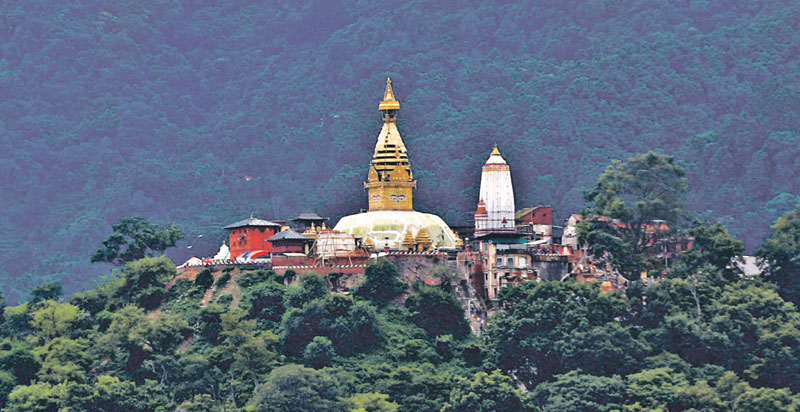Effort to conserve and restore mural paintings of Shantipur Temple
KATHMANDU: A workshop on the conservation and restoration of the mural paintings of the Shantipur Temple at the Swayambhu World Heritage Monument Zone was organised in the capital today to protect the key site damaged by the recent earthquakes.
The Shantipur Temple, a brick and mud structure, is an important Newari Buddhist site in the Kathmandu Valley. The inscription, dating from 1658, commemorates King Pratap Malla’s incursion into the shrine during the time of drought in order to pacify the serpent deities and bring rain. This shrine consists of two precincts: the secret inner chamber - where the esoteric deity Chakrasamvara is worshiped; the vestibule- where an elaborate mural painting of the Buddhist text, Swayambhu Purana, is depicted.
According to the UNESCO, although the recent painting only dates back to 1904, during the time of its renovation, evidence emerged that the painting already existed during the time of King Pratap Malla. The depiction of Swayambhu Purana is historically important not only due to its rarity but also because of its connection to the foundation of the city of Kathmandu.
Due to frequent earthquakes, few ancient mural paintings have survived. The earthquakes of 2015 have severely damaged Shantipur Temple and its mural paintings. Part of the structure collapsed and the remains have been stored in the National Museum in Chhauni. Careful structural assessment revealed that the painted wall is dangerously cracked and has to be rebuilt.
UNESCO, the Department of Archaeology and the Federation of Swayambhu Management and Conservation, have decided that the detachment of the remaining mural paintings is necessary to save what’s left. For the purpose of removing and relocating the paintings, UNESCO initiated a workshop, led by Rodolfo Lujan, an internationally leading mural paintings specialist based in Rome, Italy, in cooperation with the Department of Archaeology and ICOMOS Nepal, said UNESCO.
He will do the work and assist in capacity building of Nepali conservators for the safe removal of the murals and the conservation of the remains. The paintings will be temporary relocated to the National Museum in Chhauni.






